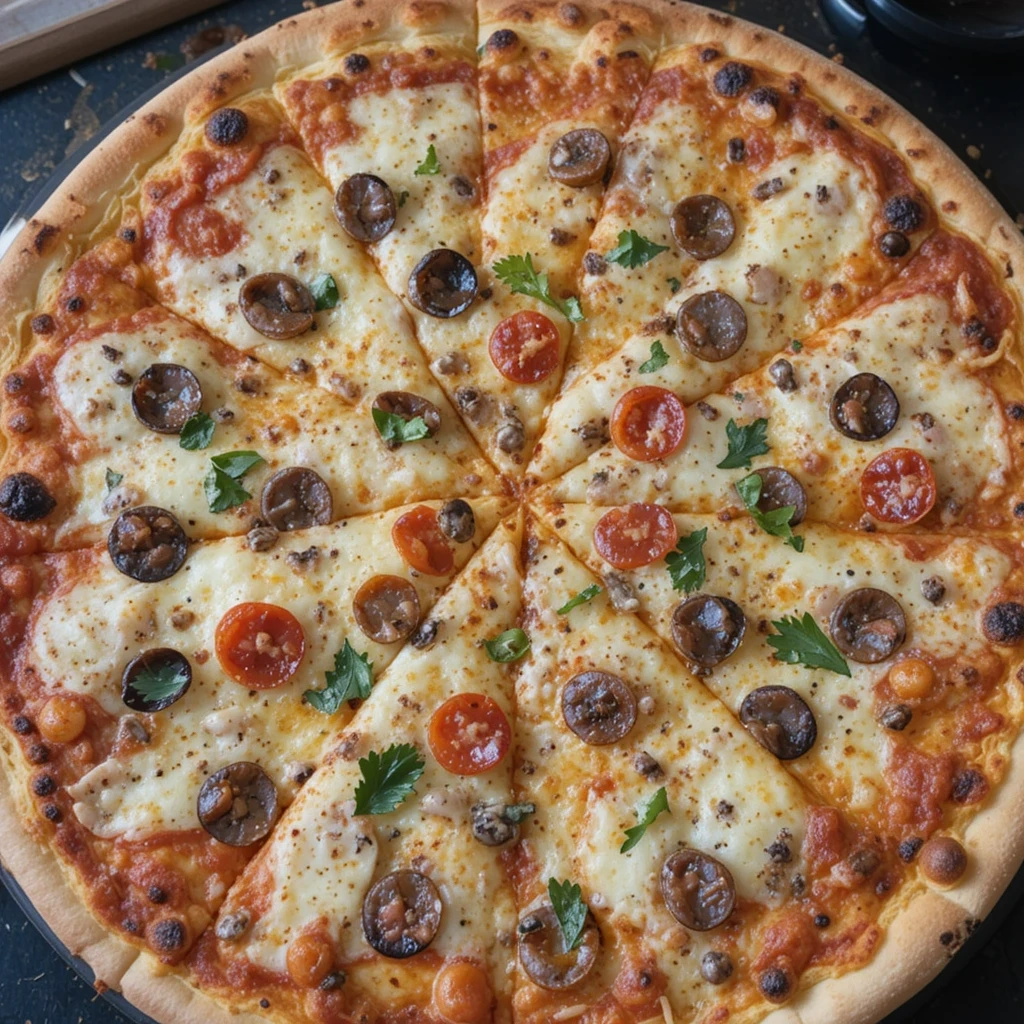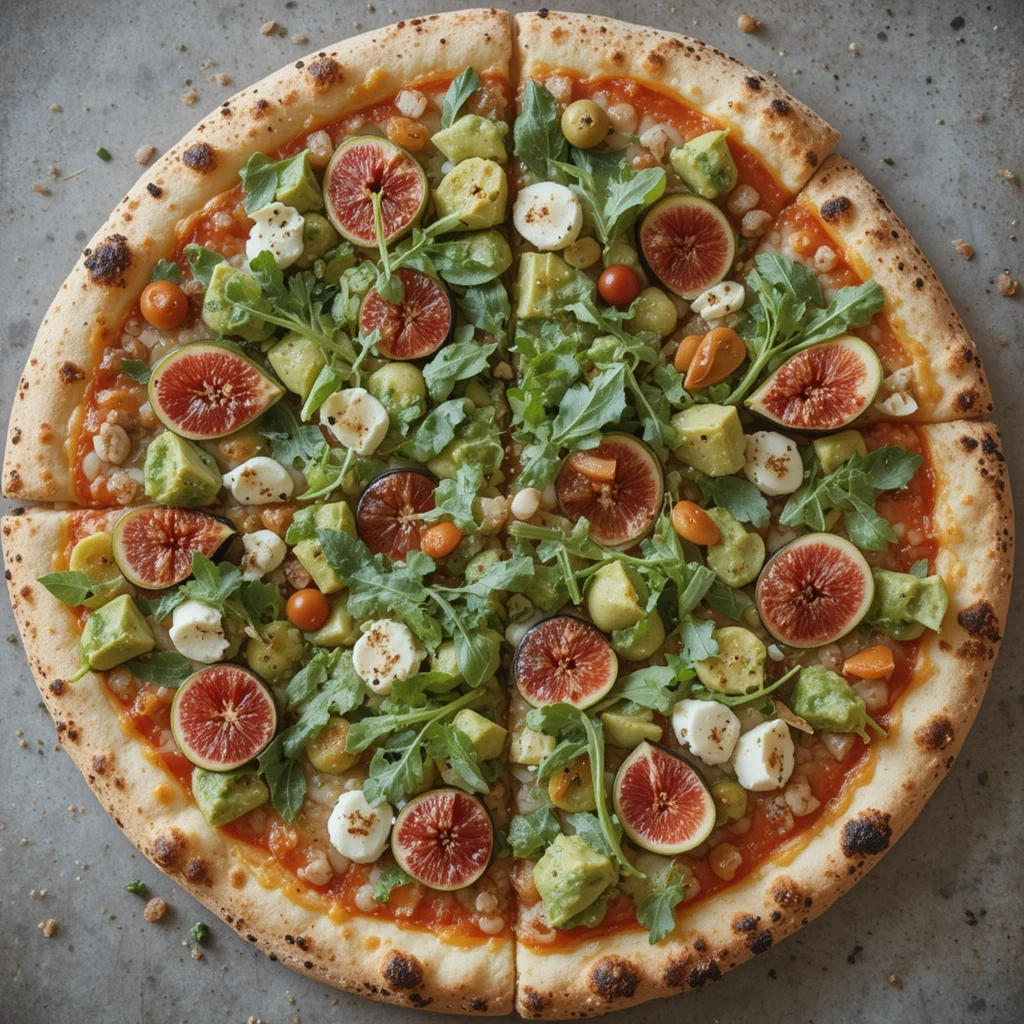Pizza is one of the most beloved foods around the world, offering endless possibilities for creativity and flavor. Whether you’re a seasoned chef or a beginner in the kitchen, making your own pizza from scratch is a rewarding experience. In this guide, we’ll explore everything you need to know about pizza edition —from selecting the right ingredients to perfecting the crust, and even tips for making various pizza edition styles at home.
Introduction to Pizza Edition
Pizza’s origin dates back centuries, but it became the global sensation we know today when it evolved in Naples, Italy, during the 18th century. Initially a humble street food, pizza has now become a staple in almost every country, loved by people of all ages.
The beauty of pizza lies in its versatility, allowing anyone to customize it with various toppings, sauces, and cheeses. Homemade pizza has its own charm, as it allows for full control over the ingredients, giving you the power to create your personal version of perfection. If you enjoy the process of baking from scratch, check out our delicious homemade cookies recipe for another fun project in the kitchen.
The Global Love for Pizza
No matter where you go, pizza is sure to be a popular choice. From Neapolitan-style pizza to New York thin crust pizza, the global love for this dish continues to grow. If you’re looking to enhance your pizza-making skills, having the right kitchen tools is crucial. Explore the range of high-quality appliances from Sub-Zero, Wolf, and Cove, which ensure that your dough rises perfectly and your toppings are evenly baked, resulting in a restaurant-quality pizza. Learn more about their products here.

Essential Ingredients for a Perfect Pizza
1. Pizza Dough: The Foundation of Your Pizza Edition
The dough is the heart of every pizza. When making pizza from scratch, the quality of your dough will significantly impact the final product. You can make pizza dough in two ways: from yeast-based recipes or using quick-rise dough for a faster result. The key is to let your dough rest and rise—this develops the flavors and texture, giving it a chewy and slightly crispy bite.
- Types of pizza dough: Neapolitan-style dough, whole wheat dough, gluten-free dough, and more
- Best practices: Use high-quality flour like 00 flour for a smoother dough and ensure you knead it for at least 10 minutes to develop the gluten
2. Sauce Options: The Flavor Base
The sauce you choose will set the flavor profile of your pizza. Most people are familiar with tomato-based sauces, but there are also other alternative sauces that can be used for gourmet pizzas.
- Tomato sauce: Classic and rich, made from ripe tomatoes, olive oil, garlic, and herbs
- Pesto sauce: A fresh alternative made from basil, pine nuts, garlic, and Parmesan. For the freshest pesto sauce, consider growing your own basil. Discover tips on growing basil here.
- Alfredo sauce: A creamy white sauce made with butter, cream, and Parmesan
3. Cheese Choices: Mozzarella and Beyond
No pizza is complete without cheese. The most popular choice is mozzarella, known for its meltiness and mild flavor. However, you can experiment with other cheeses for a unique taste.
- Mozzarella: Fresh or shredded, this is the classic cheese for pizza
- Ricotta: A creamy alternative that pairs well with fresh vegetables and lighter sauces
- Parmesan and Gouda: Use these for a sharper taste and extra richness
If you’re looking for more creative recipes, try our unique carrot cake cookie recipe for inspiration!
Making Pizza from Scratch
Step 1: Preparing the Dough
- Mix dry ingredients: flour, yeast, and salt. Add warm water and olive oil, then knead the dough until smooth.
- Let the dough rest for at least an hour in a warm place to allow it to rise and double in size.
- Once ready, roll out your dough on a floured surface to your desired thickness. Thicker dough results in a chewier crust.
Step 2: Sauce and Toppings
- Spread your pizza sauce evenly over the dough. For a classic Margherita pizza, use tomato sauce, fresh mozzarella, and a sprinkle of basil.
- Add toppings according to your preference. Whether you go for the classic pepperoni or try something more creative like roasted vegetables, the choice is yours.
3: Baking Your Pizza Edition
The temperature of your oven is crucial for achieving the perfect pizza crust. For thin crust pizza, bake at a higher temperature, around 475°F (245°C), for 10-12 minutes. For a thicker crust, bake at a slightly lower temperature and give it more time to cook through.
To achieve the perfect crispiness, consider using a pizza stone or pizza pan. These tools help in evenly distributing the heat, ensuring a golden-brown finish.

Popular Pizza Edition Styles Around the World
1. Neapolitan Pizza: Authentic Italian Pizza
Originating from Naples, Neapolitan pizza is known for its thin crust, simple toppings, and high-quality ingredients. It’s typically topped with San Marzano tomatoes, fresh mozzarella, and basil.
2. New York-Style Pizza: Thin and Foldable
New York-style pizza is famous for its large, thin slices that you can easily fold in half. The crust is crispy, but the pizza still maintains a chewy texture. Toppings can range from classic cheese to more gourmet options like artichokes and prosciutto.
3. Chicago Deep Dish: A Pizza Pie
Unlike traditional pizzas, Chicago deep-dish pizza is more like a savory pie. With a thick, buttery crust and deep layers of sauce, cheese, and toppings, it’s a hearty meal that’s perfect for those who love a filling pizza.
4. California Gourmet Pizza: Creative Toppings
California pizza takes a more experimental approach, using unique and fresh toppings. You might find pizzas topped with everything from goat cheese and figs to avocado and arugula.
Tips for Baking the Perfect Pizza
Baking the perfect pizza at home requires attention to detail and the right techniques. Here are some essential tips to help you achieve a delicious, restaurant-quality pizza:
- Preheat Your Oven: A hot oven is essential for a crispy crust. Aim for at least 475°F (245°C). If your oven can go higher, even better! The high temperature ensures the dough cooks quickly, creating a crisp exterior while keeping the inside tender.
- Use a Pizza Stone: A pizza stone helps absorb moisture from the dough, resulting in a crispier base. Place the stone in the oven while preheating to ensure it’s hot when you slide the pizza onto it.
- Avoid Overloading Your Pizza: Too many toppings can weigh down the dough and make the pizza soggy. Stick to a few high-quality ingredients for the best results.
- Roll or Stretch the Dough Thinly: A thin, even layer of dough ensures it cooks through without becoming doughy. Use your hands or a rolling pin to achieve the desired thickness.
- Use Cornmeal or Flour: Sprinkle cornmeal or flour on your pizza peel or baking sheet before placing the dough on it. This prevents sticking and makes it easier to transfer the pizza to the oven.
- Precook Certain Toppings: Ingredients like sausage, mushrooms, or onions can release moisture during baking. Precook them to avoid a soggy pizza.
- Rotate the Pizza: Halfway through baking, rotate the pizza to ensure even cooking, especially if your oven has hot spots.
Frequently Asked Questions
How do I get a crispy pizza crust?
Use a high oven temperature and bake directly on a preheated pizza stone. The stone absorbs moisture and helps crisp up the crust.
Can I freeze pizza dough for later use?
Yes, you can freeze pizza dough after the first rise. Wrap it tightly in plastic wrap and store it in an airtight container or freezer bag for up to 3 months. Thaw in the refrigerator before using.
How long should I bake a pizza at 500°F?
Most pizzas take 10–12 minutes at 500°F. Adjust the time based on your crust thickness and toppings. Keep an eye on the pizza to avoid burning.
What is the best cheese for pizza?
Mozzarella is the most popular choice due to its meltability and mild flavor. For added richness, mix in Parmesan, Ricotta, or Provolone.
How do I make pizza without a Pizza Edition stone?
If you don’t have a pizza stone, use a pizza pan or baking sheet. Preheat the pan in the oven to ensure even cooking. Alternatively, bake the pizza directly on the oven rack for a crispier crust.
Can I use store-bought dough?
Yes, store-bought dough is a convenient option. Let it come to room temperature before shaping and baking for the best results.
What’s the secret to a flavorful sauce?
Use high-quality canned tomatoes, and season the sauce with garlic, oregano, basil, and a pinch of sugar to balance the acidity. Simmer the sauce to enhance its flavor.
How do I prevent my pizza from sticking to the peel?
Generously dust the peel with cornmeal or flour before placing the dough on it. Shake the peel gently to ensure the pizza slides off easily.
By following these tips and answering common questions, you’ll be well on your way to baking the perfect pizza at home. Whether you’re a novice or an experienced cook, these guidelines will help you achieve a delicious, crispy, and flavorful pizza every time.
Conclusion
Making your own Pizza Edition is not only a fun activity but also an opportunity to create something truly unique. Whether you prefer a classic Margherita or enjoy experimenting with gourmet toppings, there’s no wrong way to make pizza. Get creative with your toppings, perfect your technique, and most importantly—enjoy the process of making your perfect pizza. To explore more culinary adventures, visit our main homepage for a variety of delicious recipes.

